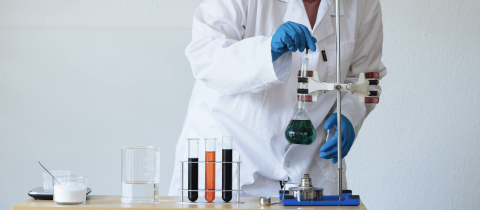The advertisement for the jacket was particularly seductive because of the claim that it was made from recycled plastic bottles. I have long criticized the excessive use of such bottles, especially when it comes to selling water that is freely and safely available from the tap. But at least the type of polyester used to make these bottles is quite easily recycled, although people are pretty callous about discarding their bottles with only about 25% ending up in the recycling bin.
Mindful that buying products made of recycled polyester can drive recycling, I bought the jacket. It turned out to be a great purchase. The external polyester shell is water repellant and the inner lining of polyester fleece turned out to be warm and comfortable. I also liked the idea that the jacket was machine washable. But that very fact, as we are now learning, can present a problem. Washing not only removes dirt, it also causes the fabric to shed non-biodegradable microfibers into the wash water and consequently into the environment. That may have consequences.
Before discussing this further, we need to clarify some terminology. Polyester garments first hit the marketplace in the 1960s as economical, easy to wash, no-iron apparel. But the fabric didn’t “breathe” well and was uncomfortable. Manufacturers eventually figured out that cutting down the thickness of the fibers used made for a much more appealing material and garments made of such “microfiber” are now ubiquitous. The “micro” refers to the thin width of the fibers which makes for a silky feel. Usually they are made of polyester, but not necessarily. Other synthetics such as nylon or acrylics can also be drawn into very thin fibers.
When such synthetic fiber garments are laundered, they release tiny particles of lint that are also often referred to as “microfibers.” They really should be called “micro-microfibers.” They are just a few millionths of a millimeter in diameter and less than a millimeter long, invisible to the naked eye. But there are lots of them shed during a wash, as many as 250,000, with a combined weight of roughly two grams, or about 0.3% of the total weight of the garment. This suggests that after some three hundred washes, the garment will disappear. Of course that is an unrealistic number of washes, but given that millions of such garments are laundered all over the world, the total weight of microfibers shed is not insignificant.
It isn’t surprising then that studies have found these fibers in sediment sampled from beaches around the world, especially near wastewater treatment plants. While such facilities remove more than 98% of plastic fragments, they do not efficiently remove microfibers. Even the microfibers that they do trap can end up in the sludge that wastewater treatment plants distribute as fertilizer that can then leach the microfibers into the environment.
Of course the mere detection of these microscopic particles does not mean that they pose some sort of risk. But it does mean that further investigation is warranted. And such studies are underway and they have caused some eyebrows to be raised. For example, synthetic fibers have been detected in the gastrointestinal tract of guppies from the Great Lakes, meaning that the fish are probably ingesting plankton that has accumulated microfibers from the water. Oysters, which are filter feeders, have also been found to be tainted with microfibers. And in one experiment, crabs fed food contaminated with microfibers ate less food suggesting that they may show some impairment of growth.
A further concern is that environmental pollutants such as residues of pesticides, PCBs or flame retardants are readily adsorbed by microfibers. This raises the question of a risk to people since seafood harbouring microfibers may make it into human mouths. There is no evidence that this presents a health issue, but the fact is that such evidence would be virtually impossible to tease out from all the other risk factors associated with our diet. Studies to this end would involve detecting microfibers in human tissues and following subjects for lengthy periods to look for disease patterns that may be linked to the amount of microfiber detected, a nigh impossible task.
There is no question, though, that the shedding of microfibers into the environment is not a good thing. So can anything be done to reduce this? Thanks to some studies carried out by manufacturers of polyester fleece garments, such as Patagonia, we have some clues. It turns out that washing garments in top-loading washing machines releases five times as many microfibers as washing them in front-loaders. Also, the older the garment, the hotter the water used, the more fibers are released. Interestingly, fish caught in North America contain more microfibers than those caught in Asia. That may be due to fewer washing machines in Asia or the lower popularity of polyester fleece apparel.
It may be possible to address the microfiber problem by building filters into washing machines, or by coating fibers with chemicals that prevent shedding. A prototype ball made of plastic strips that give it a large surface area has also been shown to be successful at attracting microscopic plastics when thrown into a washing machine. A couple of German inventors have come up with “Guppy Friend,” a 50 micron mesh reusable nylon bag that can be tossed into the washing machine with clothes inside. Soapy water can pass through but microfibers are trapped. Patagonia plans on distributing the bags at cost.
The potential health risk of microfiber exposure is likely very small, but this developing story does illustrate that even good intentions can have unforeseen consequences. Who would have guessed that recycling plastic bottles into clothing, an appealing notion, could have an effect on wildlife? The benefits of recycling bottles into clothing is still a good idea but we may have to take measures to ensure that we don’t end up being fleeced by the technology. I’m looking forward to washing my jacket in a Guppy Friend.







